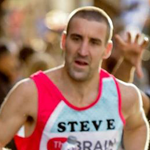Elbow & Arm
Injuries
Elbow & Arm injuries affect everyone from recreational gardeners and musicians to boxers and power lifters. Many of these injuries occur as a result of repetitive motion and stresses placed on the muscles, tendons, bones and ligaments. The impact of these injuries make life very challenging and prevent us doing activities we take for granted, like making and holding a cup of tea or shaking hands.


Common treatable conditions include:
– Tennis Elbow
– Golfer’s Elbow
– Upper Arm Fractures
– Bicep / Tricep Strains
Tennis Elbow (Lateral Epicondylitis) is a condition which affects the outer (Lateral) side of the elbow where the forearm muscles attach to the upper arm at the elbow joint. The cause of this injury is typically prolonged overuse of the forearm muscles through activities such as gardening and repetitive lifting, which causes micro tears to the forearm extensor muscles. The symptoms of Tennis Elbow are:
- Pain in elbow when lifting
- Pain when gripping object and shaking hands
- Pain when clenching your fist
- Difficulty holding objects such as a cup
Golfer’s Elbow (Medial Epicondylitis) is a condition which causes pain on the inner (Medial) side of the elbow where the forearm muscles attach to the bony landmark on the inside of the elbow. This cause of this injury is from repetitive strains from continued overuse of the forearm muscles that flex the wrist and are involved in gripping actions. The symptoms of Golfer’s Elbow are:
- Pain and tenderness on the inside (medial aspect) of the elbow
- Stiffness and pain clenching your fist or gripping
- Numbness and weakness in forearm, hands or fingers
- Difficulty turning door handles or taking a lid off of a jar
Upper arm (humerus) fractures often happen as a result of reaching out onto an outstretched arm upon falling, a car crash or another direct impact. These fractures tend to occur either in the upper region of the humerus (close to the shoulder) or in the mid portion of the humerus bone. The symptoms of an upper arm fracture include:
- Pain and swelling immediately after the trauma
- Loss of ability to move the shoulder
- Internal bleeding and also external bleeding if it’s an open fracture
- Numbness in the arm and / or shoulder
- Deformity of the bone
An upper arm strain or tear involves damage to either the Bicep or Tricep muscles or tendons. These type of injuries are usually graded between 1 and 3 depending on severity, which a grade 3 being a complete rupture of the muscle or tendon. Strains often occur when the tissue is taken beyond its normal anatomical range (over-stretched) as a result of high velocity movements or where the tension placed on these muscles or tendons is beyond the muscles ability to manage. This can occur in activities such as weight lifting, throwing, twisting unnaturally and falling on your outstretched arm. Symptoms include:
- Swelling and Bruising on the arm
- Weakness in the shoulder
- Deformity of the arm
- Loss of strength in arm or shoulder
- Pain in the arm and inability to twist the arm
fer’s Elbow (Medial Epicondylitis) is condition which causes pain on the inner (Medial) side of the elbow where the forearm muscles attach to the bony landmark on the inside of the elbow. This cause of this injury is from repetitive strains from continued overuse of the forearm muscles that flex the wrist and are involved in gripping actions. The symptoms of Golfer’s Elbow are:
- Pain and tenderness on the inside (medial aspect) of the elbow
- Stiffness and pain clenching your fist or gripping
- Numbness and weakness in forearm, hands or fingers
- Difficulty turning door handles or taking a lid off of a jar
The forearm has two bones at each side the Radius (on the lateral / outer side) and the Ulnar (on the medial / inner side. A fracture can occur to either one of these bones of both at the same time, and with at the top (close to the elbow), middle or lower (close to the wrist) part of the bone. These injuries typically occur as a result of falling on an out stretched arm, a car crash, playing impact sport and other direct blows. The symptoms of an forearm fracture include:
- Arm pain that exacerbates with wrist or elbow movement
- Pain and swelling in the forearm, wrist or hand
- Internal bleeding and also external bleeding if it’s an open fracture
- Numbness in the forearm, hand or fingers
- Deformity of the forearm
Ulnar Collateral Ligament (UCL) Sprain often occurs through participation in sports such as volleyball and baseball. The ligament complex on the inside (medial aspect) of the elbow most commonly becomes damaged through repeated stresses on the ligaments (such as throwing), however a single traumatic event can also cause this condition. The symptoms of a UCL Sprain include:
- Popping sensation when the injury occurs and when throwing
- Inability to grip objects firmly
- Inability to straighten the arm
- Pain, swelling and bruising on the inside of the elbow
- Numbness and tingling in the little and wedding ring finger
- Inability to throw








